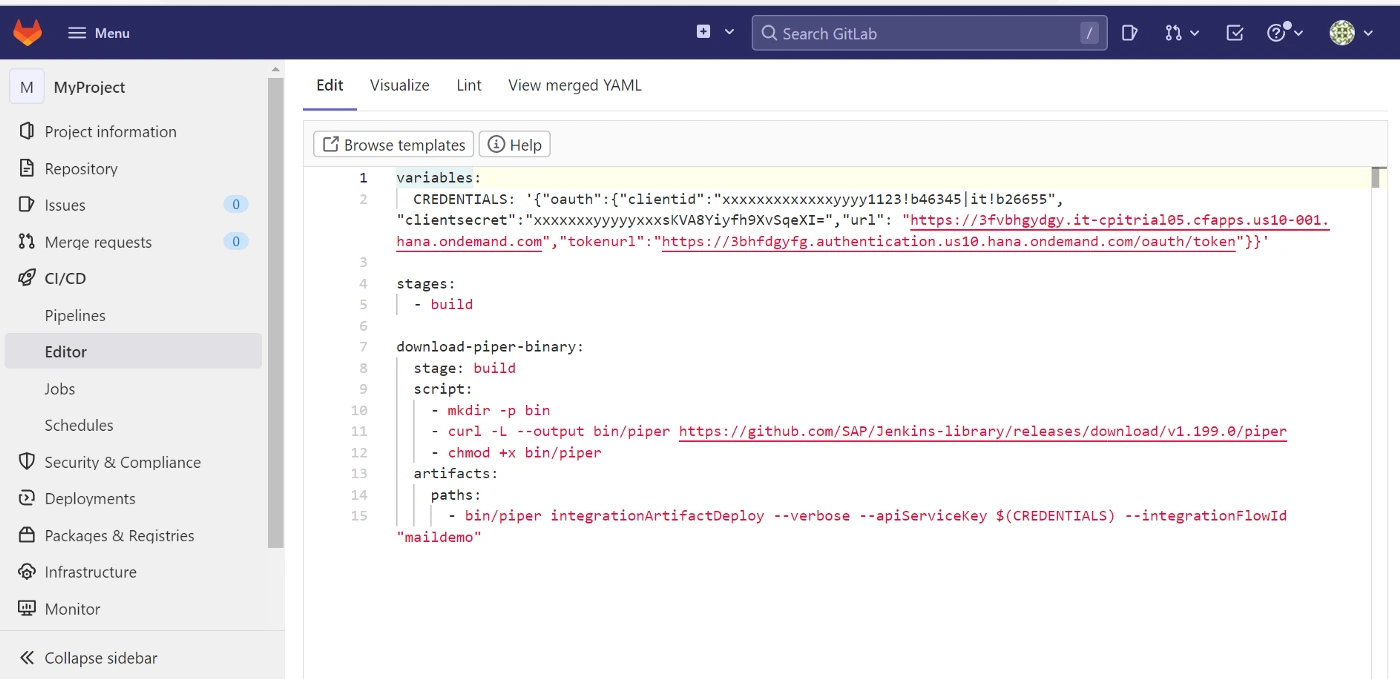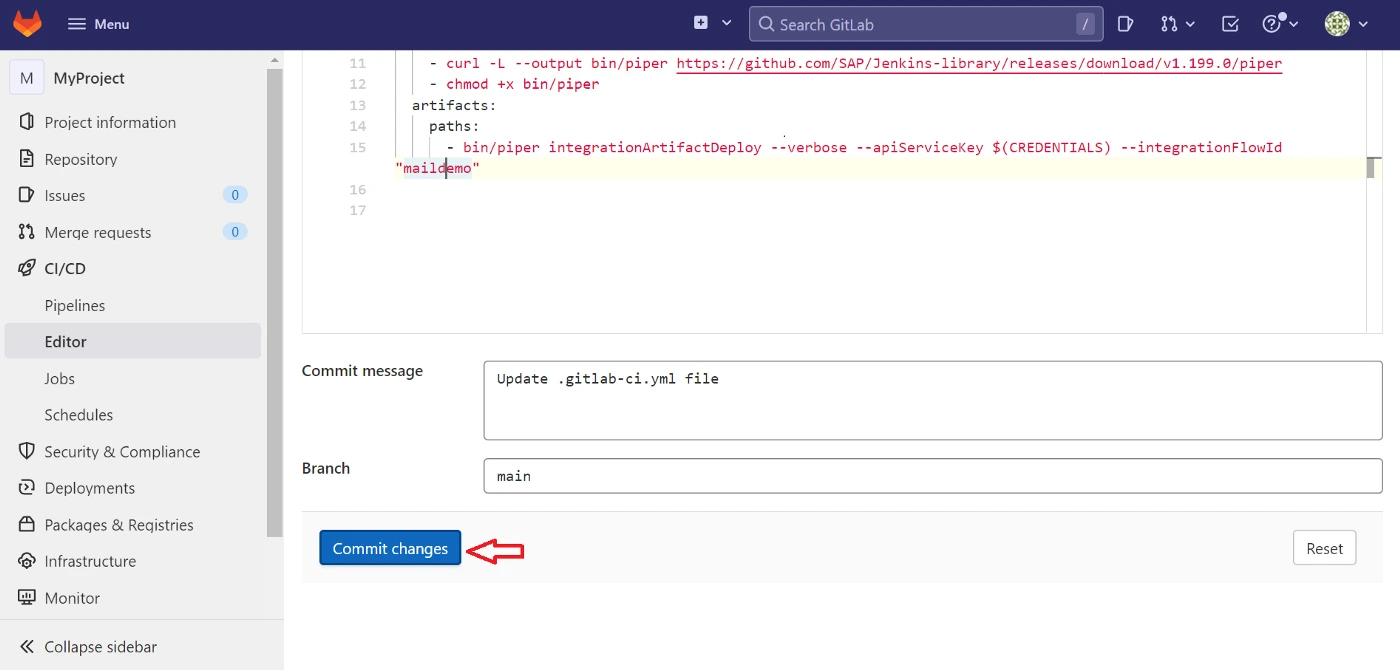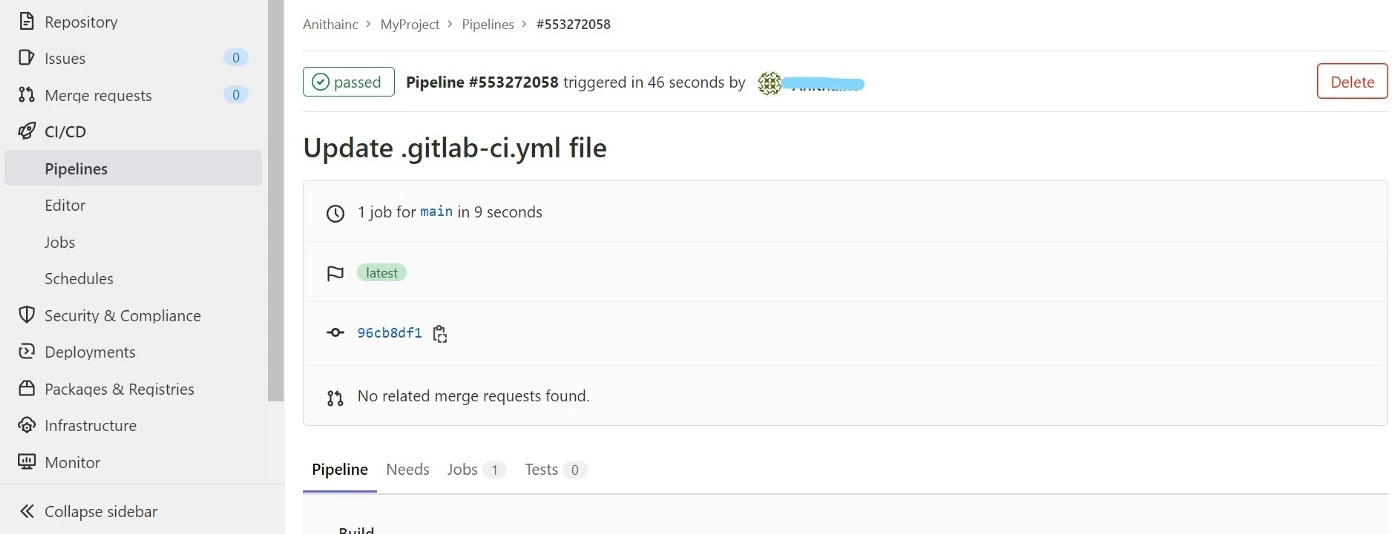SAP CLOUD INTEGRATION CI/CD USING GITLAB
WRITTEN BY
INTEGRATION
In this blog I have explained how to deploy and run CI/CD pipeline for SAP Cloud Integration artifact using GitLab.
By the end of this article you would be able to deploy a basic CI/CD pipeline for your artifact.
pre-requisite:
1. SAP Cloud Integration trial account.
2. An existing cloud integration flow.
3. GitLab with an active runner.
1. Create a new project in GitLab:

2. Modify the YAML config file :
Update the YAML file to deploy the integration artifact using Piper.
Piper is an open source tool to implement continuous delivery.

Replace the “CREDENTIALS” value as explained below:
Go to your SAP BTP trial account > select your API instance (create a new instance, if not already done)> click on the service keys > copy the entire credentials.
{
“oauth”: {
“clientid”: “xx-xlkjjfd-asd-xxxx-0000-xxxxxx!0000|it!sssss”,
“clientsecret”: “12345–6788–45rt-adcd-asdgthkjfn_xxxxxxxxxxxx”,
“url”: “https://3xxxxxxxx.it-cpitrialxx.cfapps.us10-001.hana.ondemand.com“,
“tokenurl”: “https://3xxxxxxxx.authentication.us10.hana.ondemand.com/oauth/token“
}
}
Replace the “maildemo” with your actual Iflow ID
bin/piper integrationArtifactDeploy –verbose –apiServiceKey $(CREDENTIALS) –integrationFlowId “maildemo”

3. Run the pipeline
Click the commit changes as shown below to run the pipeline.

4. Pipeline successfully triggered:
Once the pipeline is passed successfully you can see the status as shown below.

Once the pipeline is successful it will trigger the respective Cloud integration flow “maildemo”


What a Connected Oil & Gas Digital Core Looks Like And Why It Matters
The oil and gas sector faces pressure to boost efficiency, safety, and sustainability amid volatile markets and strict regulations. Digital transformation brings intelligence, automation, and transparency across upstream, midstream, and downstream operations. With SAP oil and gas solutions, enterprises can integrate processes, data, and technologies to achieve operational excellence and make faster decisions. Incture accelerates this transformation through SAP BTP and Cherrywork applications that unify data across the energy value chain.

Co-innovation at Scale: How Life Sciences Enterprises Can Leverage Strategic Partnerships for Sustained Innovation
Across the Life Sciences industry, companies face pressure to modernize operations while maintaining compliance and quality standards. Complex supply chains, regulatory needs, and the move toward personalized care demand innovation across clinical, manufacturing, and commercial functions. Managing fragmented data and ensuring audit-ready processes remain key challenges. Digital transformation powered by scalable, intelligent platforms like SAP BTP enables enterprises to connect data, automate processes, and enhance decision-making with agility and efficiency.

















































